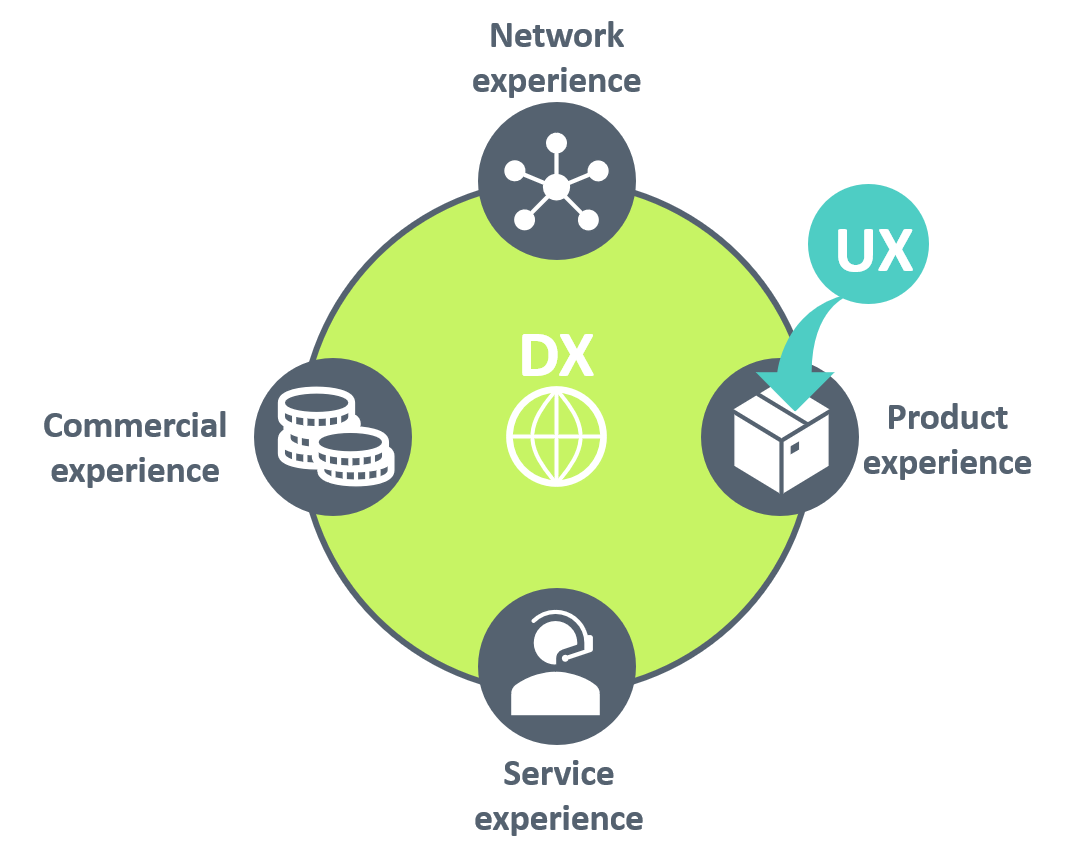Digital experience (DX) is the experience of a company and its products derived from digital channels and using digital tools. It is comprised of four elements:
- The network experience
- The product experience
- The commercial experience
- The service experience.
It focuses on making the customer happy and loyal. See The four components of digital experience (DX)
UX (user experience) focuses on making a product or service more usable. It is therefore a vital component of the product experience. Confusion arises because it is sometimes expanded by proponents to include more elements of experience than just those contained in the product experience, an approach which more properly would be termed CX or DX.
CX (customer experience) is the totality of a customer’s experience with a company and its products – comprising both digital and non-digital experiences.

What’s the difference between DX and CX? The answer is the terms are being used more and more interchangeably because digital is such an integral part of all customer experiences – it is to an increasingly large extent the experience. Digital technologies are becoming embedded into the real world and everyday objects are becoming connected. As this happens the distinction between these terms becomes less relevant. In tomorrow’s world, everything becomes a digital experience.
The totality of experiences both digital and non-digital is what we call Omnisperience. Omnisperience is both a goal and a strategy. It describes a situation where digital experiences are seamlessly integrated, consistently designed and effortless. It’s a state where a company has fully commits to experience as a way of differentiating itself in the market, meeting the needs of its customers and prospects, and delivering increased value.
